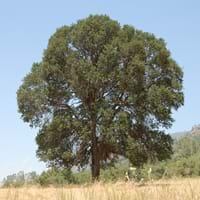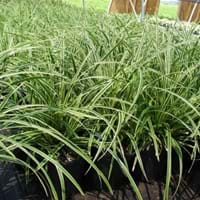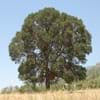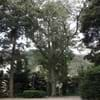Life Span
Perennial
Perennial
Origin
United States, California
Japan
Types
Not Available
Not Available
Habitat
Woodland Garden Canopy
Lawn, shaded fields, Shaded sites
USDA Hardiness Zone
6-9
5-9
Sunset Zone
3a, 3b, 4, 5, 6, 7, 8, 9, 10, 11, 14, 15, 16, 17, 18, 19, 20, 21, 22, 23, 24
3a, 3b, 4, 5, 6, 7, 8, 9, 14, 15, 16, 17, 18, 19, 20, 21, 22, 23, 24
Habit
Spreading
Clump-Forming
Minimum Height
Not Available
Minimum Width
Not Available
Flower Color
Red, Yellow green
Tan
Flower Color Modifier
Bicolor
Bicolor
Fruit Color
Not Available
Non Fruiting Plant
Leaf Color in Spring
Green, Blue Green
Green, Light Yellow
Leaf Color in Summer
Green, Blue Green
Green, Light Yellow
Leaf Color in Fall
Yellow, Orange, Pink
Green, Light Yellow
Leaf Color in Winter
Not Available
Tan
Leaf Shape
Irregular
Long Narrow
Plant Season
Spring, Summer, Fall, Winter
Spring, Summer, Fall, Winter
Sunlight
Full Sun, Partial Sun
Partial shade, Full Shade
Type of Soil
Not Available
Clay, Loam
The pH of Soil
Not Available
Acidic, Neutral
Soil Drainage
Not Available
Well drained
Bloom Time
Spring
Early Summer, Summer
Tolerances
Drought
Drought
Where to Plant?
Ground
Container, Ground, Pot
How to Plant?
Seedlings
Divison, Seedlings
Plant Maintenance
Medium
Medium
Watering Requirements
Average Water Needs
Average Water Needs
In Summer
Lots of watering
Lots of watering
In Spring
Moderate
Moderate
In Winter
Average Water
Average Water
Soil pH
Not Available
Acidic, Neutral
Soil Type
Not Available
Clay, Loam
Soil Drainage Capacity
Not Available
Well drained
Sun Exposure
Full Sun, Partial Sun
Partial shade, Full Shade
Pruning
Remove damaged leaves, Remove dead branches, Remove dead leaves, Remove dead or diseased plant parts
Remove damaged leaves, Remove dead branches, Remove dead leaves
Fertilizers
All-Purpose Liquid Fertilizer
All-Purpose Liquid Fertilizer
Pests and Diseases
Red blotch
Red blotch
Plant Tolerance
Drought
Drought
Flowers
Insignificant
Insignificant
Flower Petal Number
Not Available
Single
Foliage Texture
Medium
Fine
Foliage Sheen
Not Available
Glossy
Aesthetic Uses
Borders
Showy Purposes
Beauty Benefits
Not Available
Not Available
Environmental Uses
Air purification, Shadow Tree, soil erosion prevension on hill slopes, Wildlife, Windbreak
Air purification
Medicinal Uses
Astringent, Diarrhea, Dysentry, Haemorrhages, Poultice, Sore Eyes, Sore throat
Not Available
Part of Plant Used
Leaves, Seeds, Wood
Not Available
Other Uses
Adhesive, Basketary, Buttons, Repellent, Tannin, Used as fuel, Used for woodware
Not Available
Used As Indoor Plant
No
No
Used As Outdoor Plant
Yes
Yes
Garden Design
Feature Plant, Shade Trees, Street Trees
Container, Edging, Groundcover, Mixed Border, Rock Garden / Wall
Botanical Name
QUERCUS douglasii
Carex Morrowii
Common Name
Blue Oak
Japanese Sedge, Carex Grass Evergold
In Hindi
Blue Oak Tree
Carex Grass Evergold
In German
Blaue Eiche
Carex Grass Evergold
In French
Bleu Oak Tree
Carex Grass Evergold
In Spanish
Azul del árbol de roble
Carex Grass Evergold
In Greek
Μπλε Oak Tree
Carex Grass Evergold
In Portuguese
Carvalho azul
Carex Grass Evergold
In Polish
Niebieski Oak Tree
Carex Grass Evergold
In Latin
Blue quercum ligno
Carex Grass Evergold
Phylum
Magnoliophyta
Tracheophyta
Class
Magnoliopsida
Magnoliopsida
Family
Fagaceae
Cyperaceae
Clade
Angiosperms, Eudicots, Rosids
Angiosperms, Commelinids, Monocots
Tribe
Not Available
Not Available
Subfamily
Not Available
Not Available
Number of Species
Not Available
Importance of Blue Oak and Carex Grass Evergold
Want to have the most appropriate plant for your garden? You might want to know the importance of Blue Oak and Carex Grass Evergold. Basically, these two plants vary in many aspects. Compare Blue Oak and Carex Grass Evergold as they differ in many characteristics such as their life, care, benefits, facts, etc. Every gardener must at least have the slightest clue about the plants he wants to plant in his garden. Compare their benefits, which differ in many ways like facts and uses. The medicinal use of Blue Oak is Astringent, Diarrhea, Dysentry, Haemorrhages, Poultice, Sore Eyes and Sore throat whereas of Carex Grass Evergold is Not Available. Blue Oak has beauty benefits as follows: Not Available while Carex Grass Evergold has beauty benefits as follows: Not Available.
Compare Facts of Blue Oak vs Carex Grass Evergold
How to choose the best garden plant for your garden depending upon its facts? Here garden plant comparison will help you to solve this query. Compare the facts of Blue Oak vs Carex Grass Evergold and know which one to choose. As garden plants have benefits and other uses, allergy is also a major drawback of plants for some people. Allergic reactions of Blue Oak are Pollen whereas of Carex Grass Evergold have Itchiness respectively. Having a fruit bearing plant in your garden can be a plus point of your garden. Blue Oak has showy fruits and Carex Grass Evergold has no showy fruits. Also Blue Oak is not flowering and Carex Grass Evergold is not flowering . You can compare Blue Oak and Carex Grass Evergold facts and facts of other plants too.





